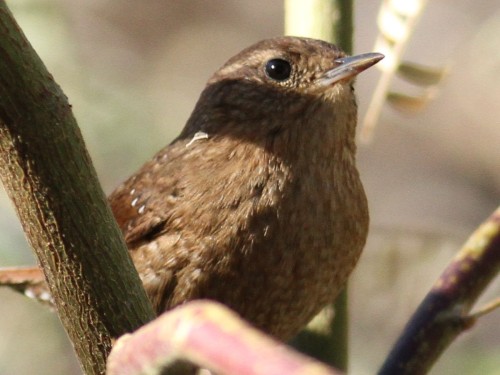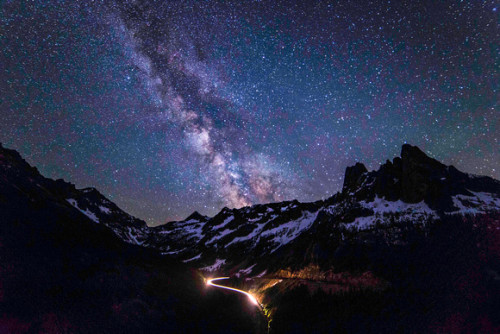Shooting Stars: Nighttime Photography, Wildflowers and More (a preview of 2016!)

By Rob Rich
I came to the Pacific Northwest for many reasons, but one of them was, well, for the birds. Were those harlequin ducks for real? What was so special about the Pacific wren? And oh, how I longed to see the red-shafted Northern Flicker! These were some of my last thoughts before finally chasing the sun towards the Salish Sea. But since most birds don’t migrate from East to West, I knew I’d need a guide to set me straight.
Thankfully, I’d planned North Cascades Institute’s Spring Birding to be my first stop upon arrival. That’s right, I signed up from 3,000 miles away, tossed out my moving boxes in Bellingham and settled first things first: learning birds in the field with Libby Mills.
If you too feel like a lost goose at times, do not fear. Spring Birding is back, as are a host of other older Institute favorites – and some new ones that look out of this world. Literally. Where else but North Cascades Institute can you take a class that is astronomically synchronized for the nighttime awe of photographers? And where else can you hang out with snake experts, or decipher the clues of wildlife tracks in our precious winterscapes? As always, the great unveiling of the Institute’s January-June courses will expose natural curiosities you never knew you had. Experienced and emerging naturalists alike will both be forced to reckon with a growing list of reasons why the North Cascades are where it’s at.

In many places, classes in natural history can easily become exclusive and cliquish. But at the Institute, it’s not about what the experts know and the rookies don’t. No, it’s about inviting the amateur in each of us to come out, which, as Robert Michael Pyle likes to remind us, originally means “one who loves.”
Because the Institute’s programs invite such diverse ways of knowing and engaging the natural world, they’ll welcome both sides of your brain (and your body) to fully appreciate a new critter, a new cedar-like brushstroke, a new wildflower. At North Cascades Institute, it’s not just about teaching names; it’s about sharing experiences.
Over the next six months there are possibilities to stimulate all five senses, night or day, in almost three seasons, and in places ranging from the Salish Sea to the Skagit Flats, from a mighty river to a snowy peak, or from a city wall and rattlesnake den. I’ve been stalking the Institute’s course offerings for a while now, and I have to say the offerings in the first half of this year are reaching as wide and wild as ever. In these courses, natural history is a verb. It is adventuring near and far to taste, see, hear, smell and touch.
So if you’re hankering for some curried nettle soup and sea bean sauté, North Cascades Institute has got you covered. If you’ve never been whirled in a snowstorm of snow geese on the Skagit Flats, the opportunity is before you. Whether you want a nighttime portrait or to learn about the wildflowers, make your wish on a shooting star this season and sign up at www.ncascades.org.
2016 is North Cascades Institute’s 30th Anniversary! This year is going to be quite a party, and I look forward to celebrating together in the field.
Rob Rich is a naturalist and writer. He holds a BA in Environmental Studies from the University of Montana and a MS in Natural Resources from the University of Vermont. Rob is completing a Communications Internship with North Cascades Institute as part of further studies in writing at Western Washington University. He also works on contract with the Whatcom Land Trust and serves as a board member for the Nooksack Salmon Enhancement Association and the Natural History Network. You can find his writing in High Country News, Sierra, Camas, The Catch, Northern Woodlands and Adirondack Journal for Environmental Studies. You are likely to find him prowling the woods and beaver ponds near his home in Bellingham, where he loves to seek out the songs of Pacific wrens.

